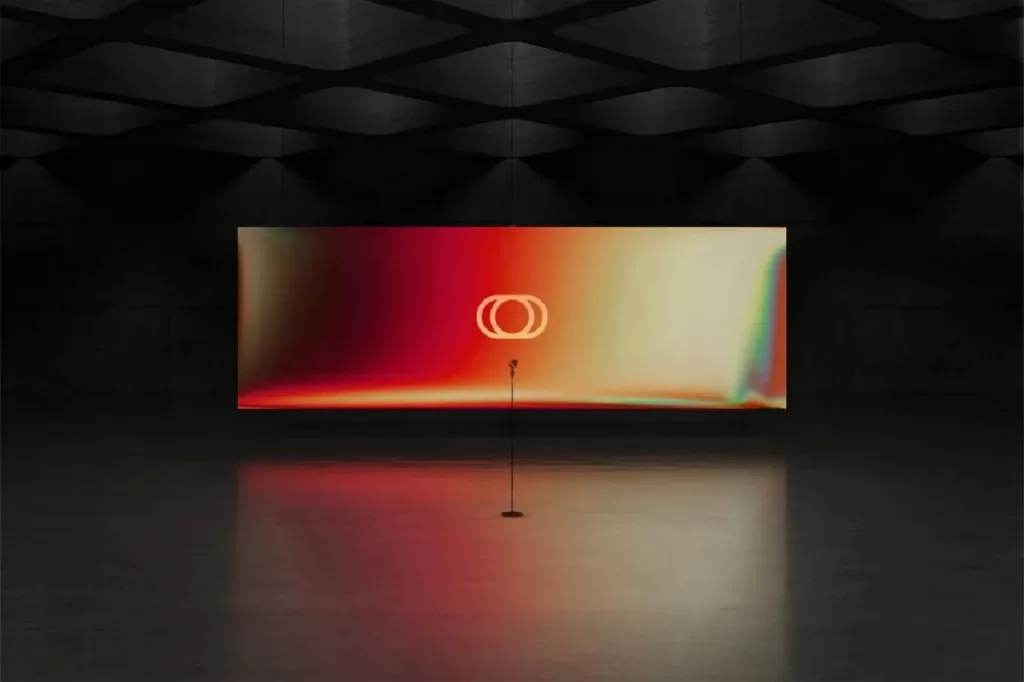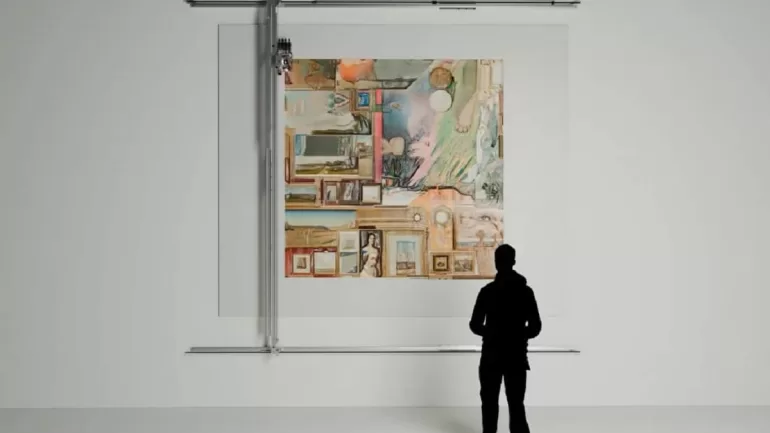ART & DESIGN
Untitled Robot Painting (sample generative art shown), AI Art by Alexander Reben. Photo: Christie’s Images Ltd. 2025.
Christie’s groundbreaking AI art auction is dividing the art community. Is AI art a creative revolution or a copyright infringement?
BY KAZEEM ADELEKE, ARTCENTRON
NEW YORK, NY- Christie’s New York‘s announcement of its Augmented Intelligence auction has sent shockwaves throughout the art world, sparking a massive debate on the intersection of Artificial Intelligence (AI) and art creation. The groundbreaking auction will showcase art pieces generated with AI technology, marking a historic milestone for one of the world’s top auction houses. However, the excitement surrounding the event quickly turned into controversy as critics voiced concerns about the ethical implications of AI in art creation. The central debate revolves around the authenticity of digital art and the issue of copyright infringement.
The Growth of AI in the Art World
Artificial Intelligence is expanding beyond the realms of technology and industry. As with other industries, it is now making a significant impact on the world of art. AI models like Midjourney, Stable Diffusion, and DALL-E enable artists to create visually stunning pieces by processing massive datasets of images and applying complex algorithms. These AI-driven tools are capable of producing exciting artworks that rival human-made creations. However, there are concerns about their role in the creative process.
Christie’s New York’s Augmented Intelligence auction includes works created using AI alongside traditional forms of art. This pioneering event, for many, reflects the growing influence of AI on the future of art. With a projected sale of over $600,000, the auction will include pieces by well-known digital artists. The list includes Refik Anadol, Holly Herndon, and Mat Dryhurst. Artworks range from sculptures to paintings and NFTs (non-fungible tokens). These works span a timeline of five decades, with a significant number of digitally created pieces.
The Open Letter: Outrage from the Art Community
Following the announcement of Christie’s AI-focused auction, the art community erupted in criticism. In an open letter circulated online, artists and advocates criticized Christie’s promotion of AI art. At the core of the criticism lie the ethical concerns surrounding AI-generated art. Many accuse the auction house of exploiting human artists. Critics argue that AI models, which power the generative tools behind these artworks, are trained using copyrighted material. They contend that this was done without the consent or compensation of the original artists. Therefore, the more than 4000 signatories to the letter unanimously urged Christie’s to halt the AI art sale.
The letter accuses AI companies of stealing intellectual property by using copyrighted works to train their models. It highlights how these AI systems have ingested vast amounts of human-created art from across the internet, often without proper attribution or payment to the creators. The signatories of the letter argue that Christie’s is undercutting artists. By showcasing these works in the auction, they accuse the company of complicity in perpetuating a system that undermines the livelihood of traditional artists.
Are AI-Generated Works Real Art?

At the heart of the controversy is the question of whether AI-generated creations are “real” art. While some people believe that art must be the product of human expression, creativity, and intention, others disagree. Disagreeing parties argue that AI tools are merely another form of artistic medium that enhances the creative process. Those in favor of AI-generated art claim that these works are the result of a collaboration between humans and machines. AI, they said, is a tool to bring new ideas to life.
The artists in the Augmented Intelligence auction argue that AI enhances their creative practices. They contend that it enables them to experiment with new techniques and ideas that were previously unimaginable. For them, the inclusion of AI in the creative process does not diminish the artistic value of a work of art but rather opens up new avenues for exploration and expression.
The Debate Over Copyright and AI Training Models
Another key issue raised by critics is the legality and fairness of using copyrighted works to train AI models. These AI programs rely on vast datasets of images, many of which are sourced from the internet. These datasets include copyrighted works by living artists, often without their permission or compensation. Critics argue that this constitutes copyright infringement, as AI companies are using these works to train their models and develop products that are later commercialized.
The issues of copyright infringement and commercialization have led to multiple lawsuits against the companies behind these AI tools. Artists have filed legal claims against AI companies, accusing them of using their works without authorization. The technology companies defend their use of copyrighted materials by citing fair use laws. These laws, they said, allow for the limited use of copyrighted works without permission in certain circumstances. Furthermore, they argue that their use of these images is transformative, as the AI is not replicating the original works but rather generating something new based on the learned patterns and structures from the images.
The Role of Christie’s and Its Responsibility in the Auction
Christie’s has responded to the backlash by defending its position on the auction. A spokesperson for the auction house emphasized that the artists whose works are on sale are established figures in the art world with strong multidisciplinary practices. Some of these artists, including Sarp Kerem Yavuz, use AI as a tool to explore the boundaries of traditional art forms. Yavuz, whose work is part of the auction, also defended the use of AI in art creation. According to him, AI-generated images are not the product of theft but the result of combining millions of images to create something entirely new.
In furtherance of its defense of the Augmented Intelligence, Christie’s toes the line of the AI companies. The auction house argues that the AI models used in the works going on auction are an evolution of the creative process. They blend the capabilities of AI with the vision of the artist. The auction house made it clear that it believes AI-generated art has a rightful place in the art world. Above all, it is not a replacement for human creativity but an extension of it.
The Future of AI Art and Copyright Laws
As AI continues to evolve and shape the future of art, legal frameworks for copyright protection are struggling to keep up. In a recent ruling, the US Copyright Office stated that works created entirely by AI tools are not eligible for copyright protection. However, it also clarified that artists who use AI tools to create original works can claim copyright over the resulting pieces.
This decision highlights the complexities of integrating AI into the creative process. It articulates the ongoing challenges in defining the boundaries of copyright law. As AI becomes increasingly integrated into artistic practices, lawmakers must expedite their efforts. They will need to move quickly to address the legal and ethical implications surrounding AI-generated art.
Conclusion: The Intersection of Technology and Art
The Christie’s Augmented Intelligence auction is an important moment in the ongoing debate about the role of AI in art. While the technology behind AI-generated art offers exciting possibilities for creative expression, it also raises significant concerns about copyright. The exploitation and the authenticity of digital art remain contentious. As the auction approaches, the debate will undoubtedly continue to evolve. Artists, auction houses, and technology companies must work to find common ground in an ever-changing digital landscape.
Ultimately, the future of AI-generated art will depend on how we address the ethical, legal, and artistic challenges it presents. Christie’s role in this conversation is crucial, as the auction house sets the stage for a new era of art that merges technology and creativity.
